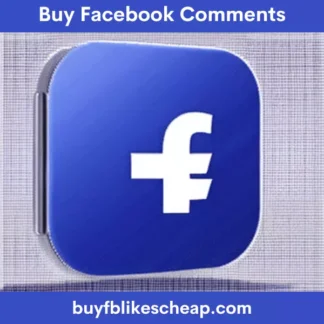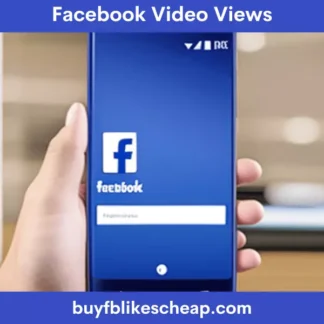Why is it so difficult to get our followers to interact with us on social media? The number of voices vying for your attention is definitely a factor. Every day 2.5 billion new content and posts are shared on Facebook. To stand out from the crowd you have to offer something that really adds value.
Are interactions on social networks so important? Or is it just vanity? Interactions help your content go further and have a greater impact organically on different networks. These measurements are not meant to make you feel good about yourself while the numbers increase, but rather to build a strong network of followers and fans who are interested in your content. The purpose is to attract new customers.
The content must be of value to generate interactions. It needs to be really helpful, interesting, inspiring, curious, likeable, or engaging in some other way. Consider the psychology of social content.
Creating content that generates interaction requires ingenuity and creativity, but experience has taught us that it is also necessary to create a framework around the content to gain ground on social networks.
Set engagement goals
Different interactions generate different actions. If what you are looking for is to increase brand awareness, look at the number of retweets and times your content is shared, as this way it will appear in the profiles and accounts of users who would not see it otherwise. Increasing your fan base is also a good long-term strategy as your content will reach more people, who will be able to spread your message.
Decide what you want to achieve and the metrics to measure success in that area.
Different activities and different types of content will have a different impact on the number of interactions you receive. For example, a Twitter Chat can be useful to increase your number of followers, since each person who joins will spread the conversation. You must have a discussion interesting enough to captivate new audiences. A chat is also a great way to increase interactions with your community.
Once you have decided what you want to achieve, you can design your campaign to achieve those particular goals.
Understand your audience to increase social media interactions
Your audience is made up of real people, with different interests in addition to your brand. This is a fairly obvious point, but one that many companies forget. By understanding what these interests are, you can add value.
Social media analytics tools can give you the information you need to examine the topics your audience is talking about.
Sharing content from other sources, as well as helping you refine your own message will be a useful tactic. Usually, when brands talk only about themselves, audiences get tired and stop following them.
Sharing relevant content from other sources will break from branded content and show that you are thinking about your audience and their interests. Acknowledging the value that other organizations and other authors bring shows that you’re not just there to sell.
Take into account the type of content
Something that is repeated constantly and that is supported by research is that images and videos receive the highest number of interactions. However, publishing visual content is not a quick fix and needs to be carefully crafted.
A minimum requirement is to make sure you use the correct sizes for each format. Sites use different dimensions for photos, and they have guides for you to use the right one.
In addition to visual content, there are other techniques frequently used to increase interactions on social networks:
- Make questions
- Take surveys
- Organize competitions
- Use relevant hashtags
A popular technique is to make RTing your message a requirement to participate. This gives people the incentive to share your tweet, which will help get your message in front of more people. This was the strategy that Honda used during a contest that lasted a month, and with which it increased the conversation around its brand by 1221%
Hashtags can make it easier for people to find your content, but abusing them is considered bad practice. Taking a popular hashtag that doesn’t belong to you is a practice used by spammers and bots, which you should avoid.
Remember that although these techniques work, none will guarantee success. For this, it is necessary to offer valuable content: relevance, help, and humor, among others. It doesn’t look good if you ask something and no one answers or you do a survey and no one participates.
Find the best time to post
The best time for you to post content will depend on a number of factors. Your location, if your focus is national or international, the industry you belong to, and the platform you are using are some that you should take into account.
The best way to determine when to post is to look at your own data in analytics (either within an integrated tool like Facebook Insights, or a specialized one like Brandwatch). This will give you the most relevant and personalized information about the best times to reach your audience.
With Brandwatch you can compare your activity to that of your audience by days of the week and hours of the day. With this you will have specific data about your audience and allow you to align your activity to that of your followers.
There are also several studies that have thoroughly investigated what the best times to post are on average. These studies typically take into account thousands or millions of posts across various industries and can be useful if you don’t have access to your own analytics data.
SumAll has taken several of these studies and made two infographics of when it is advisable to publish and when it is not.
Choose your channels well
Is it advisable to be in all the social networks that exist? You want to be accessible to your audience, and that may mean being on more than one platform. However, it is important not to exceed your capabilities, since responding almost immediately should be one of your priorities (more on that later).
Think about which of these networks is best for your business. B2B companies typically find a more engaged audience on LinkedIn than they do on Snapchat.
In some cases, it may be useful to create more than one account on the same platform. Many companies have a main account and another for customer service. This way they separate those conversations from the rest of their consumers.
Segmenting some accounts is a good strategy. It may be that you are publishing different types of content aimed at different segments of your audience. Lumping them all together can result in a lack of consistency or content that is not relevant to some. This can lead to low interactions and loss of followers.
Respond quickly
This is vitally important. People contact brands through social media channels and expect a quick response. On previous occasions we have talked about how to use comments as a marketing tool.
One study revealed that customers who receive responses via Twitter are significantly more satisfied with the brand experience. They are also willing to recommend the company and pay more in the future.
Responding to customers shouldn’t be just when it comes to complaints. Part of getting more engagement from your audience involves, surprise, engaging with them.
When a client or prospect interacts with your brand, responding in an appropriate, friendly and human time is the most recommended. The NikeRunning Twitter account is a great example of this, as they constantly interact with their customers, creating a community of people with common interests.
Use tools to increase your social interactions
There are a variety of tools out there that can help you drive engagement in a variety of ways, from better content to making it easier to share.
Spruce – Enhance your interactions by creating photos with text. Write your message, choose from thousands of images for public use or upload your own and upload it directly to Twitter or Facebook. Free.
Canva – Easy to use online design software with templates for social media. It’s free so you can create better images for your channels.
Click To Tweet – Generate links so your readers can tweet direct quotes from the content on your website. Simple to use and offers tracking and analytics.
Digg – A WordPress plugin created by Buffer. Add share buttons on your page. The platforms it covers are: Twitter, Buffer, Facebook (share), and Facebook (“like”), Digg, LinkedIn and Google+.
HowSociable – Add your social media accounts, or those of your competition, to receive weekly ratings for each platform.
Monitor your metrics to improve
Obviously, you should keep track of your efforts and results to understand what is working and what is not. There should always be a little experimentation and control over your numbers to repeat what is generating the desired results.
What should you measure? It largely depends on your goals. Brandwatch monitors different metrics so you can understand which techniques have been most successful. The following are some that you should consider:
Followers – The people who will be constantly exposed to your posts and content. The more followers you have, the greater your reach.
Shares and RTs – How many times you’re content is shared with others, increasing your relevance.
Mentions – How many times your brand is mentioned in tweets or posts.
Comments – The number of comments in response to a post.
Likes – Probably the least valuable engagement metric, as it is easy to obtain. People often hit the like button without actually reading the story.
Reach – The number of individuals who actually see your content.
Impressions – The potential number of times your content is viewed (not the actual number of times it is viewed). This may include the same person if you see it more than once.
Sentiment – When you monitor conversations on social networks, Social Intelligence tools use a natural language processor to determine between negative and positive sentences.
Share of Voice – By keeping track of the conversations around your brand and your competition, you can understand the percentage that is focused on your brand.
Traffic – The ultimate goal is that all interactions end up driving people to your site. Your analytics program will tell you how many people have reached through your social media channels.
Getting engagement on social media is about connecting with people by offering content of value to them. Setting clear goals and defining your audience are keys to success. In addition to this, you can complement your strategy with simple research to maximize your efforts.
Remember that the only way to know what works and what doesn’t is to keep track of your brand. Continuous monitoring will give you the possibility to adjust your strategy based on your results, to improve your interactions.





